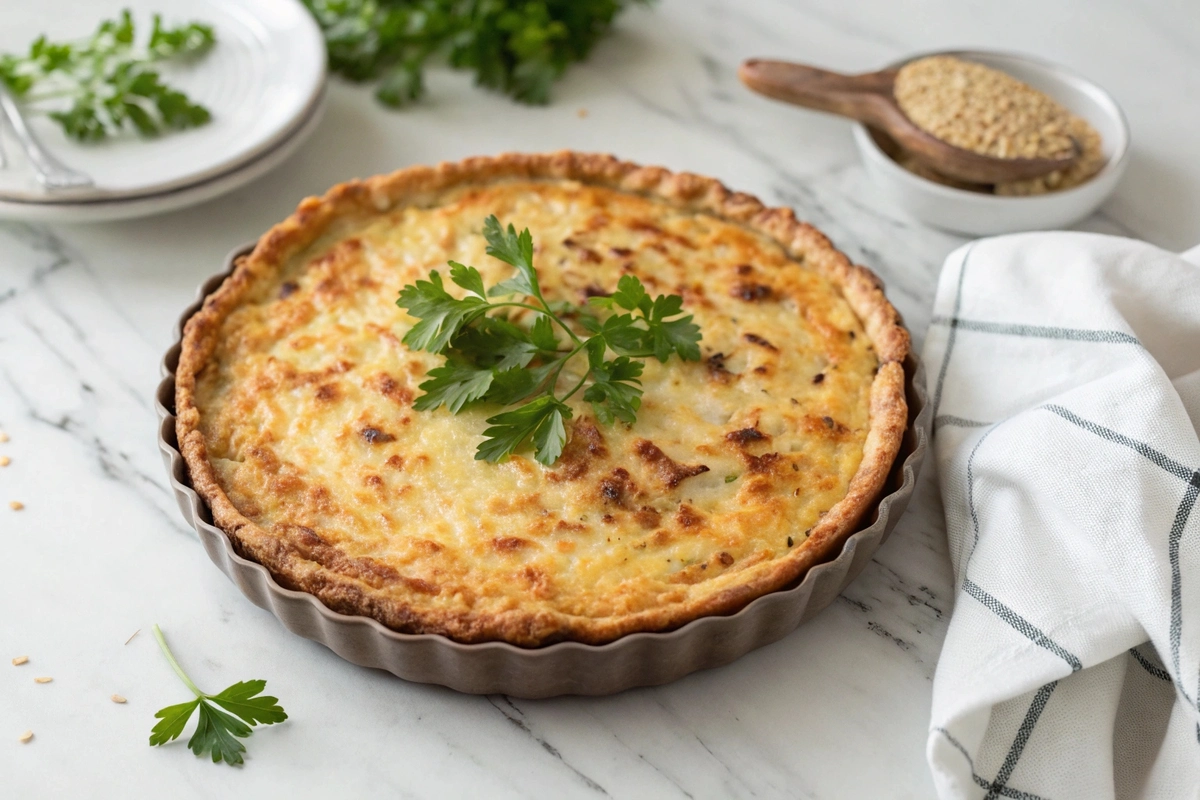The Ultimate Passover Potato Pie: A Delicious Tradition
Passover potato pie is one of those dishes that instantly brings comfort—crispy on the outside, soft and flavorful inside. It’s a staple at many holiday tables, blending tradition with a hearty, satisfying bite.
I still remember the first time I made it on my own. My grandmother, the queen of Passover cooking, had passed down her foolproof method, but I was convinced mine wouldn’t hold up. Yet, as the golden crust formed in the oven, filling the kitchen with the scent of roasted potatoes and onions, I knew I had something special.
Whether you’re looking for a classic Ashkenazi version, a Moroccan-inspired twist, or a crispy skillet variation, this guide will walk you through the best ways to make this beloved dish. No matter your cooking style, there’s a version here that fits your needs—simple, flavorful, and perfect for Passover.
So, let’s dive in! You’ll learn not just one, but three incredible ways to make Passover potato pie—each with its own unique texture and taste. Stay tuned for the full recipes ahead!
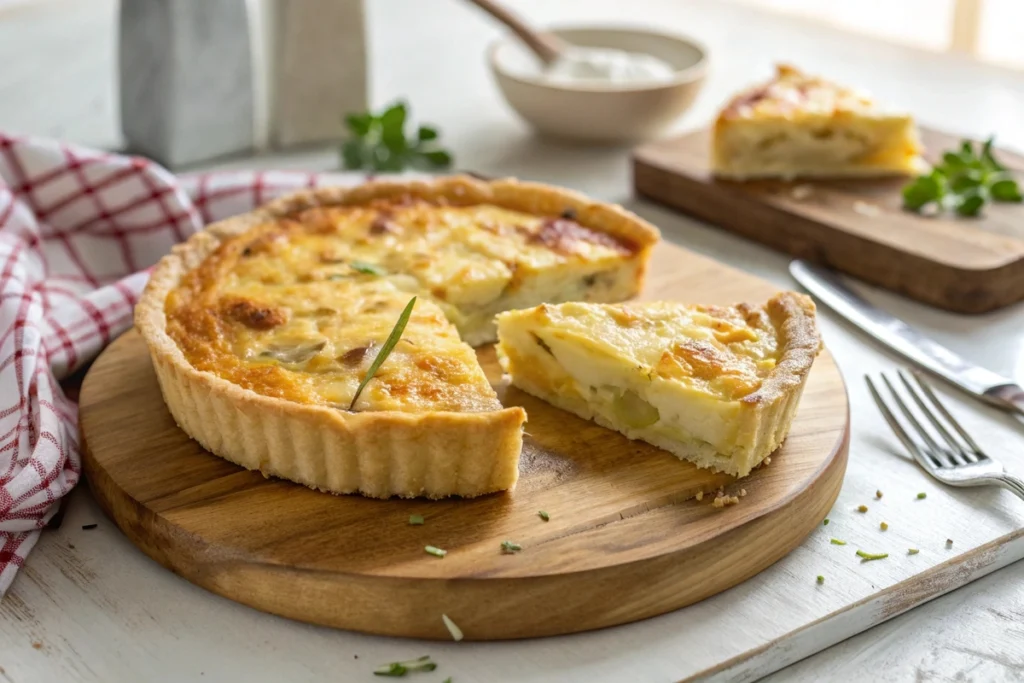
Essential Ingredients & Smart Substitutions
Great recipes start with great ingredients, and Passover potato pie is no exception. While the dish itself is simple, choosing the right potatoes, seasonings, and binders can make all the difference. Plus, if you’re looking for a twist, there are plenty of creative substitutions to explore.
Choosing the Right Potatoes
Not all potatoes are created equal, especially when it comes to baking. The best varieties for Passover potato pie are:
- Russet Potatoes – High in starch, these give the pie a light, fluffy texture inside.
- Yukon Gold – Naturally creamy, offering a richer, buttery flavor.
- Red Potatoes – Less starchy, ideal for a denser, heartier version.
If you prefer a slightly sweet variation, swap out regular potatoes for sweet potatoes. This adds a subtle caramelized flavor, making it a great match for savory or slightly spiced pies.
For more details on the best potatoes for baking, check out this potato guide.
Binders & Texture Boosters
Eggs play a key role in holding everything together, but there are ways to tweak the texture:
- Extra Egg Yolks – Make the pie richer and more custard-like.
- Whipped Egg Whites – Create a lighter, airier consistency.
- Matzo Meal or Potato Starch – Help absorb moisture and provide structure.
Want a completely grain-free option? Try almond flour or coconut flour—both add a slight nuttiness while keeping the pie Passover-friendly.
Seasonings & Flavor Enhancers
A well-seasoned Passover potato pie should have more than just salt and pepper. Here are a few ideas to add depth:
- Onions & Garlic – Sautéed until golden, these add sweetness and umami.
- Paprika – A light sprinkle gives a hint of smokiness and a vibrant color.
- Fresh Herbs – Parsley, dill, or rosemary can brighten up the dish.
- Turmeric or Cumin – Perfect for Moroccan-inspired variations.
For an extra punch of flavor, roast the potatoes before mashing. This deepens their natural sweetness and adds a slightly crisp edge.
Dairy or Dairy-Free? Your Choice!
While traditional recipes are dairy-free, some prefer a richer version. If you want a more indulgent pie, try these:
- Olive Oil or Schmaltz – Classic Passover-friendly fats for a deep, savory taste.
- Butter or Ghee – For a creamy, golden crust (if dairy is allowed).
- Non-Dairy Options – Coconut oil or avocado oil works well, keeping it pareve.
Making It Your Own
One of the best things about Passover potato pie is its versatility. Whether you stick to a traditional recipe or experiment with flavors, the right ingredients ensure success. Up next, we’ll dive into the first recipe—a classic, oven-baked version that’s crisp on the outside and soft in the middle.
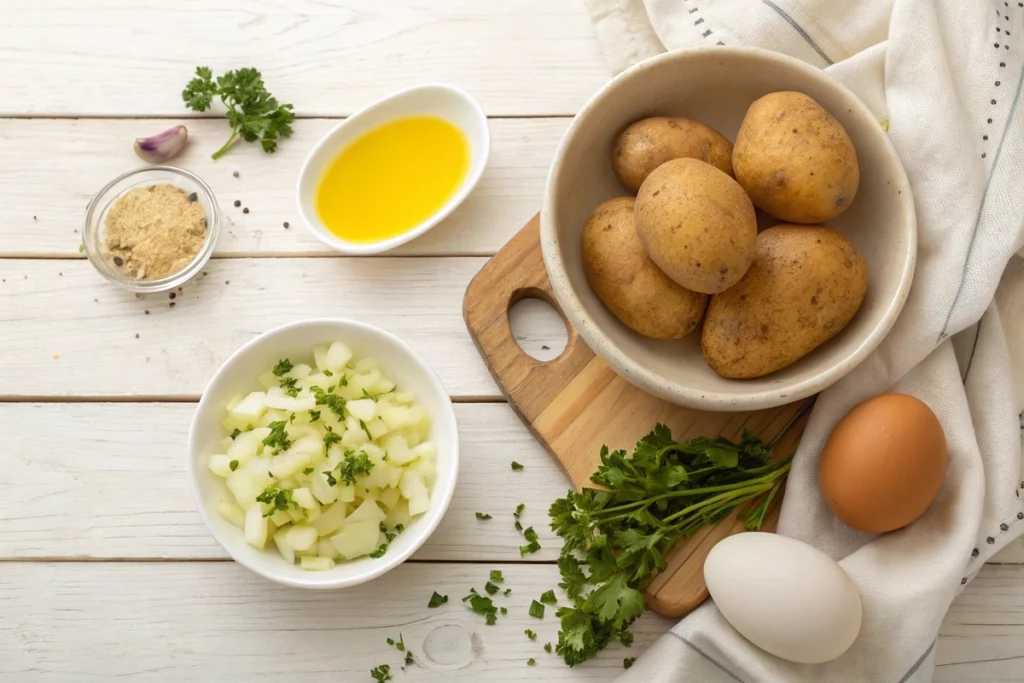
Classic Baked Passover Potato Pie
This traditional oven-baked Passover potato pie is everything you want in a holiday dish—crispy on the outside, soft and flavorful inside. It’s simple, satisfying, and pairs beautifully with roasted meats or vegetable sides. If you’re looking for a classic approach, this is the recipe to start with.
Ingredients
For the Pie:
- 6 large potatoes, peeled and grated (Russet or Yukon Gold)
- 4 large eggs, beaten
- 1 medium onion, finely chopped
- ½ cup olive oil (or melted schmaltz for a richer flavor)
- ½ cup matzo meal (or potato starch for a grain-free option)
- 1 teaspoon salt
- ½ teaspoon black pepper
- ½ teaspoon paprika (optional, for a smoky touch)
For the Topping (Optional):
- 1 tablespoon olive oil (for extra crispiness)
- Fresh parsley, chopped (for garnish)
Step-by-Step Explanation for Making Passover Potato Pie
Each step plays a crucial role in achieving a perfectly crispy yet tender Passover potato pie. Below is a more detailed breakdown of the process:
1. Preheat the Oven and Prepare the Baking Dish
- Set your oven to 375°F (190°C) so it reaches the right temperature while you prepare the ingredients.
- Grease a 9-inch baking dish with olive oil to prevent sticking and to create a slightly crispy bottom crust. You can use a glass, ceramic, or metal baking dish—the metal tends to give the crispiest results.
If you prefer a more traditional kugel-style dish, you might like this authentic potato kugel recipe.
2. Grate the Potatoes and Remove Excess Moisture
- Use a box grater or a food processor with a grating attachment to shred the potatoes finely. This ensures even cooking and a uniform texture.
- Place the grated potatoes in a clean kitchen towel or cheesecloth, gather the edges, and squeeze out as much liquid as possible. Why? Potatoes release a lot of water, and if this moisture isn’t removed, the pie may become soggy instead of crisp.
3. Combine Ingredients for the Batter
- In a large mixing bowl, add:
- The grated potatoes
- Beaten eggs (which help bind everything together)
- Finely chopped onion (for flavor and moisture)
- Matzo meal or potato starch (to absorb excess liquid and provide structure)
- Salt, black pepper, and paprika (for seasoning and a touch of smokiness)
- Mix well until everything is evenly distributed. The mixture should feel slightly sticky but not too wet.
4. Assemble the Pie in the Baking Dish
- Transfer the potato mixture to the greased baking dish.
- Use a spatula or the back of a spoon to press and smooth the top evenly. This ensures the pie bakes uniformly and develops a consistent texture.
5. Add Olive Oil for Extra Crispiness
- Drizzle a little extra olive oil on top before baking.
- This helps create a golden, crispy crust, which is one of the best parts of a well-made Passover potato pie.
6. Bake Until Golden Brown
- Place the dish in the preheated oven and bake for 50–60 minutes.
- Check for doneness when the top is golden brown and the edges start to pull away from the sides of the dish. This indicates that the moisture has been properly cooked out, and the pie is firm enough to hold its shape.
7. Rest and Garnish Before Serving
- Once baked, remove the dish from the oven and let it rest for 10 minutes before slicing.
- Resting allows the structure to set, making it easier to slice without falling apart.
- Garnish with fresh parsley or another herb of your choice to add color and a hint of freshness.
Now your Passover potato pie is ready to serve! Enjoy it warm as a side dish or even as a main course.
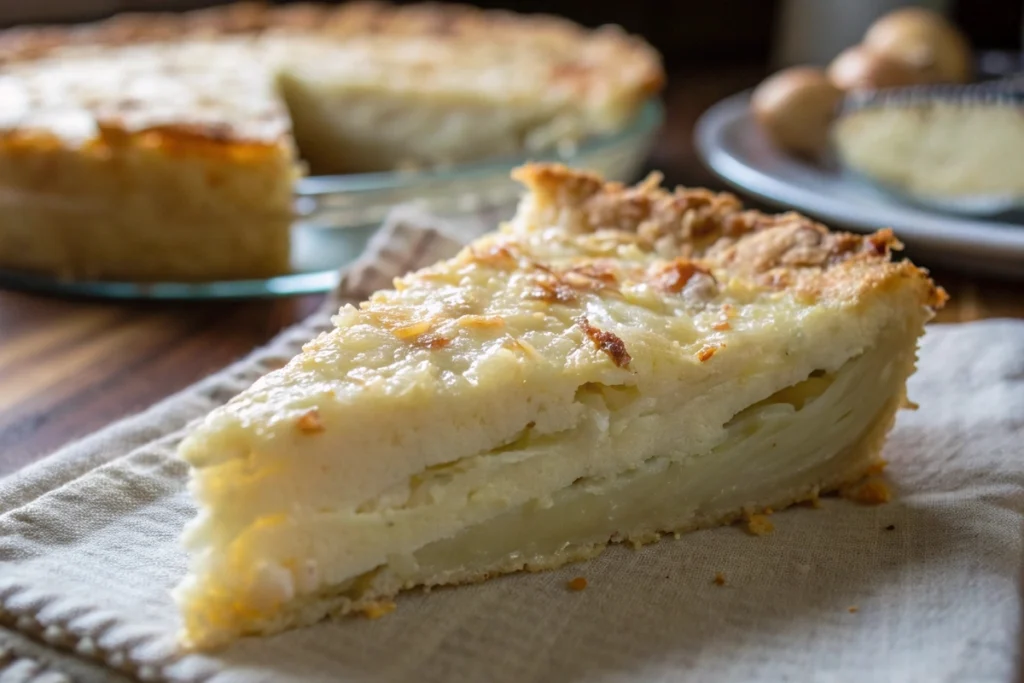
Nutrition Facts
This recipe makes six servings. Approximate nutrition per serving:| Calories | Carbohydrates | Protein | Fat | Fiber |
|---|---|---|---|---|
| 320 | 45g | 8g | 12g | 4g |
Perfect Side Dishes for Passover Potato Pie
Pairing the right sides with Passover potato pie turns it into a complete, satisfying meal. Whether you want a light, fresh contrast or a hearty protein, here are some perfect pairings.
Protein Pairings
- Slow-Braised Brisket – The rich, savory flavors of brisket complement the mild, creamy texture of the pie.
- Roast Chicken with Herbs – A simple, oven-roasted chicken with rosemary and thyme pairs beautifully.
- Lemon-Garlic Salmon – A fresh, citrusy fish dish adds brightness to balance the hearty pie.
Vegetable Sides
- Roasted Asparagus with Lemon Zest – Light, zesty asparagus keeps the meal balanced.
- Sautéed Green Beans with Almonds – Adds crunch and a hint of nuttiness.
- Carrot Tzimmes – A traditional Jewish side dish made with sweet carrots, honey, and cinnamon.
Fresh Salad Options
- Beet and Orange Salad – The sweetness of roasted beets and the citrus tang of oranges pair well.
- Cucumber-Dill Salad – A refreshing, cool salad that contrasts with the warm, crispy potato pie.
- Classic Israeli Salad – Chopped tomatoes, cucumbers, and fresh herbs for a light, crisp side.
These sides ensure that your Passover meal feels complete and balanced, whether you’re going for a traditional or modern approach.
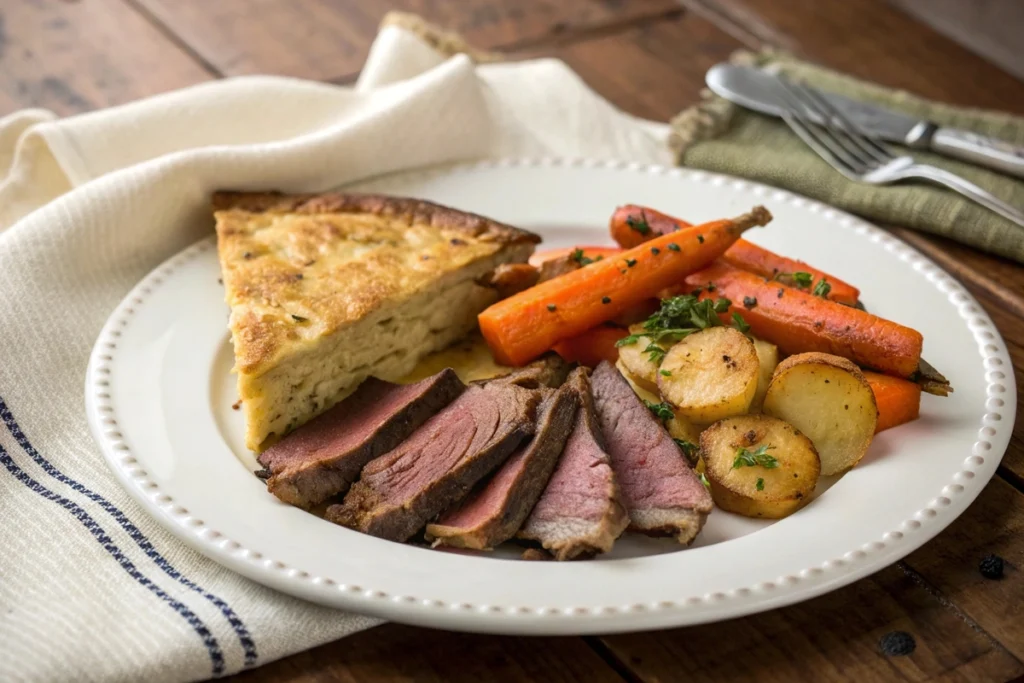
Pro Tips & Variations
- For extra crispiness, bake at 400°F (205°C) for the last 10 minutes.
- Love garlic? Add 2 cloves of minced garlic to the mixture for extra depth.
- Make it dairy-free by using olive oil instead of schmaltz.
- Want a richer flavor? Swap half the potatoes for sweet potatoes.
This classic Passover potato pie is a timeless favorite, but if you’re feeling adventurous, the next recipe puts a Moroccan-inspired spin on the dish. Stay tuned!
How to Store and Reheat Passover Potato Pie
Making Passover potato pie ahead of time? Storing leftovers? No problem! Proper storage and reheating techniques ensure the dish retains its crispy exterior and soft interior.
Refrigerating Leftovers
If you plan to eat your pie within a few days, store it in the refrigerator:
- Let the pie cool completely before storing to prevent condensation.
- Place slices in an airtight container or wrap the whole pie in foil.
- Store in the fridge for up to 4 days.
Freezing for Later
Passover potato pie freezes well, making it a great make-ahead dish.
- Slice the pie into portions and wrap each piece tightly in plastic wrap.
- Place wrapped slices in a freezer-safe container or a zip-top bag.
- Freeze for up to 3 months.
Reheating for the Best Texture
To bring back that just-baked crispiness, avoid microwaving if possible. Instead, try these methods:
- Oven (Best for Crispiness):
- Preheat to 375°F (190°C).
- Place the pie (or slices) on a baking sheet.
- Bake for 15-20 minutes until heated through and crispy.
- Skillet (For Extra Crunch):
- Heat a non-stick pan over medium heat.
- Add a small amount of oil and crisp each side for 3-5 minutes.
- Microwave (Quickest, But Softens Crust):
- Place a slice on a microwave-safe plate.
- Heat in 30-second intervals until warm.
For best results, use the oven or skillet methods to keep the crust crispy while preserving the pie’s texture.
FAQ
Can Jews eat potatoes on Passover?
Yes, potatoes are completely kosher for Passover and widely used in many traditional dishes. Since grains like wheat, barley, and rye are restricted, potatoes serve as a versatile, flour-free alternative for baking and cooking. They appear in everything from kugels to latkes and, of course, Passover potato pie.
What is potato kugel made of?
Potato kugel is a baked casserole made with grated potatoes, eggs, onions, and oil. Some recipes include a matzo meal or potato starch to help bind the mixture. The dish is known for its crispy top and tender interior, making it a staple at Passover and Shabbat meals.
Can you eat potato bread on Passover?
It depends on the ingredients. Traditional potato bread contains flour and yeast, which are not allowed during Passover. However, some Passover-friendly versions use potato starch instead of flour, making them suitable for the holiday. Always check for a kosher-for-Passover label if purchasing from a store.
What is the difference between potato pie and potato kugel?
While both dishes use potatoes as the main ingredient, they differ in texture and preparation. Potato pie is often denser, shaped like a round or rectangular pie, and sometimes includes additional seasonings or layers. Potato kugel is typically softer, baked in a casserole dish, and has a crispier top due to its grated potato mixture.
Final Thoughts
Passover potato pie is more than just a dish—it’s a celebration of tradition, warmth, and family gatherings. Whether you stick to the classic baked version, try the Moroccan-inspired Maakouda, or opt for a crispy skillet variation, this versatile recipe is sure to be a crowd-pleaser.
Now that you’ve mastered these techniques, why stop here? Explore more Passover-friendly dishes and get creative in the kitchen. And if you have any questions or favorite variations, feel free to share—there’s always room at the table for new ideas!
Looking for more delicious holiday dishes? Check out our best potato-based recipes for more inspiration!

